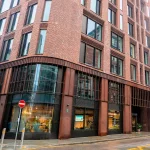Openreach Hint UK FTTC Broadband Installs Starting to Shrink

Openreach (BT) has hinted that, for the first time, new installations of their hybrid Fibre-to-the-Cabinet (FTTC / VDSL2) broadband ISP lines may soon start to shrink, which would partly reflect the rising coverage of gigabit-capable Fibre-to-the-Premises (FTTP) technology.
The last official BT Group results to the end of March 2022 noted that Openreach had covered 29,045,000 UK premises with “superfast broadband” (usually 24Mbps+ or 30Mbps+) capable lines (here), which is up from 28.96m in the previous quarter. The vast majority of that will have been achieved via their older hybrid copper and fibre FTTC technology, which first started to be deployed in 2008.
By comparison, Openreach’s full fibre FTTP service was reported to have covered 7.194m premises in March (up from 6.442m at the end of 2021), which also contributes to the “superfast” figure above. But most of that will also be overbuilding older FTTC deployments, as is normal when working to replace an older technology.
Advertisement
In terms of the total customer broadband connections, it was noted that 16.229m were taking an FTTC service (up from 16.094m) from any ISP and 1.771m were taking FTTP (up from 1.508m). Suffice to say that, at the time, FTTC connections were still showing growth and that’s despite the rising, albeit still somewhat smaller, reach of FTTP coverage.
However, it was inevitable that FTTC, much like the pure copper line ADSL technologies that came before it, would eventually reach a precipice from which it would start to fall. Now several readers have pointed us to a post by Black Sheep (a known Openreach/BT worker) on the venerable Kitz forum, which states that FTTC installations started to shrink earlier this month, which would mark the first time that has happened since 2008.
Officially, the operator has so far declined to provide ISPreview.co.uk with the latest connections data to support the aforementioned claim (we’ll have to wait for their next results in late July 2022), but they did inform us that a “decline in the FTTC base wouldn’t be a surprise over the coming quarters“. This reflects the fact that there can often be a bit of plateau before a persistent fall starts to really bed-in over time.
Nevertheless, it does appear as if the ageing technology is now reaching its peak. Consumers will instead be switching away to faster FTTP or Hybrid Fibre Coax (HFC) lines on Openreach or other networks and ISPs.
Advertisement
In addition, the cost-of-living crisis and ongoing improvements to mobile broadband connectivity (4G and 5G) may also be causing a smaller proportion of users to scrap their fixed lines altogether. But we’ll have to wait awhile before Ofcom’s data is updated to cover the mid to late 2022 period in order to test whether the usual trends in that area have changed – historically mobile-data dependent households have been a minority.
As ever, there will also be a lot of consumers on FTTC lines who may not yet be aware that FTTP exists in their area, although the opposite doesn’t necessarily result in an instant upgrade. Take-up can be impacted by all sorts of factors, such as a lack of awareness about the availability of faster services, contentment with an existing package, fear about the loss of a traditional copper phone line or being stuck by to an existing contract etc.
Mark is a professional technology writer, IT consultant and computer engineer from Dorset (England), he also founded ISPreview in 1999 and enjoys analysing the latest telecoms and broadband developments. Find me on X (Twitter), Mastodon, Facebook, BlueSky, Threads.net and Linkedin.
« Lit Fibre Adds 6 New UK Towns to Full Fibre Broadband Rollout























































Surely switching customers over to full-fibre must mean withdrawing their PSTN service, reportedly put on hold?
It’s only been the BT Digital Voice migration that has been suspended. Customers are quite free to take a new FTTP connection and get rid of their older service without having to keep a landline number.
Most peoples still on FTTC (with line rental) or SoGEA FTTC (without line rental) because Openreach don’t have any planning for Full Fibre.
There’s more to this…. another reason for the increase in uptake of FTTP could well be the stop-sell notice on priority FTTP exchanges for all non-FTTP products – no deals available, and none but existing providers will take me on – even to upgrade to FTTP – so the stop-sell is literally that, all competition is eliminated – OFCOM what are you doing !
A lot of FTTP deals from likes of BT and TalkTalk are quite competitive, and example being BT Fibre 2 customers getting free upgrades to Fibre 150.
If your street has FTTP, you would have to have something wrong with you to go for FTTC. The jump is like going from Dialup to ADSL. And not just in terms of speed, but in terms of ping and line stability.
I can understand that if you’re on fibre laid by Openreach or Cityfibre, so you can easily switch to another ISP with the ISP offerings they have. But if a local altnet dug up your pavements and their service happens to be unreliable you’d be stuck with them, so having the choice of going back to FTTC is a good thing.
Maybe some people are happy with the service they have and feel no need to move to FTTP. Most people who want broadband in a street in a street will already have it so will be changing from FTTC to FTTP.
While you may think the jump is like going to from dial up to ADSL. You may be right to a certain extent, going from dial to ADSL allowed people to download webpages a lot faster, get higher quality streaming, not that there was much of it around then, so it really did make a difference. The same when we jumped to FTTC, not that websites really load a lot faster with FTTC compared to ADSL, but then a lot of website have a loot more rubbish shoved on them with more advertising and other media rubbish to slow them down.
while FTTP would normally be faster than FTTC, would you notice the difference? I have an average of 35Mb/s, and it does 4K video and other stuff works fine on it. Upload could be better, but i don’t upload a lot yet and when i do, I will just leave it do it overnight.
If there are a few people in the house, then a faster FTTP service may be worth it.
Anyway, some people may not want the hassle of having FTTP installed.
You can also see an issue where people think they already have fibre because of the way Openreach and ISP’s have advertised FTTC since 2008. Many people out there don’t understand the difference between FTTC and FTTP because they are not tech savvy. This will probably be an issue for altnets selling door to door as well.
Well it doesn’t help when you see posters on the cabinets of FTTC, saying fibre broadband is here, so people think that they have fibre broadband, link to photo I took when it was first rolled out here. https://www.dropbox.com/s/98yfudw48ymqlzb/FTTC%202013.jpg?dl=0
Even now with Zzoomm rolling out fibre here, I get people saying I already have fibre.
The difference between FTTC and FTTP are Dynamic Line Management (DLM) will be on FTTC. But those on FTTP will be no DLM on it.
@Phil do you actually understand what the DLM actually does?
And to your other comment wether you have sogea or normal fttc or even fttp you still pay line rental.
The only way that my mobile, 4 year old Motorola G6, works in my house trough a Cisco FEMTO providing 3G that I bought from them a couple of years ago. Now them are closing that service on the false issue that national 3G or 4G will work – but does not here – or you can use Wi-Fi Calling, but they cannot provide on this mobile. My broadband is good enough, about 26 Mb/Sec, with fibre to the village.
As always, all that they are interested in is towns and forget about the rural areas that actually need it. And I am only 5 miles away from a motorway.
Anyone would think they are privately owned companies trying to generate profit with attitudes like that towards harder to reach areas.
Why not just use voip?
I’m from a rural area, coverage has been fine here, as it is when travelling around in said area. It might not work where you are, but that is patently not the norm. 5 miles from a motorway doesn’t mean a lot – the motorway itself probably does have coverage, but that doesn’t mean it’ll reach you.
The networks are dumping 3G and part of that process will be to shut down the 3G femto infrastructure (and save on its associated support costs). 3 got rid of theirs ages ago, I think Vodafone did so in 2021, and EE are the last to do it. Not sure if O2 ever offered it.
You have the option of upgrading to a phone with wifi calling (not as expensive as you might think, pretty much every recent name-brand Android device & iPhone 6 and newer will do it).
So What do you do if you still don’t have FTTC and are still on ADSL?
4G? Starlink?
@Richard: Your only real hope is an Altnet FTTP provider. If you are in London, you have high possibility of having either Hyperoptic, CommunityFibre, G.Network, etc. Like I mentioned in my post below, several postcodes with no FTTC have FTTP from CommunityFibre or Hyperoptic at least in London.
I’m not saying Openreach won’t deploy FTTP, but looking at my research their deployment is usually much, much slower than Altnet providers. You might have fewer options out of London. Now maybe I might be wrong, maybe Openreach might concentrate more on FTTP out of London. But at least in London those with no FTTC have less hope of FTTP.
The reality is FTTC is being phased out. That may not be happing very fast at present but it will speed up
It will be years before FTTC vanishes, as it will be years before the whole country is covered with FTTP, if it ever is. You can still get ADSL if you want it, in fact I know someone who still have ADSL and no matter how many emails and letters their provider send them, they have no intention of changing unless they really have to. It was only a few months ago that I helped someone move from dial up to 4G as 4G have improved where they live, I think the mast was moved or something, because the signal went right up. No other way of getting internet there.
I dont understand why we have some pcp in the surrounding streets with fttc but not ours, and no idea when or if it will be coming. Fttc been around for over 6 years, we are still waiting
You won’t be getting it ever.
It’s ironic, but there are quite a few postcodes (at least 11 that I’ve found) that I know from the back of my mind that still haven’t been upgraded to FTTC!!
At least here in Central London in my area E1 7AH Bradbury Court no FTTC. E1 6LW and E1 6NE Kensington Apartments remains as planned for FTTC last 2 years. Whitechapel E1 7RA – No FTTC yet but plan for FTTP.
Arcadia Court E1 7NY – No FTTC but plan for FTTP for Openreach. Sidney Street E1 2HH – No FTTC and no plan for FTTC or FTTP! Though have CommunityFibre and soon will get Hyperoptic in August.
Siege House E1 2HQ – No FTTC and no plans for FTTP!
Shearsmith House (high rise) E1 8HT no FTTC but plan for FTTP. The building next to it Stockholm House E1 8HR no FTTC but plan for FTTP.
Hatton House (high rise) E1 8JH – No FTTC but plan for FTTP.
Gordon House (high rise) E1W 3EB – No FTTC but plan for FTTP.
I’m sure if I dig some more postcode research I will find more without FTTC yet!
I only just got upgraded to FTTC in October 2019 after more than 6 years of wait. It’s unbelievable, I thought I’ll be left out, but luckily my EO Line got upgraded.
Those plans that you see in the Openreach site checker are generally superficial!!! They do not mean anything. What shows as plan for FTTC simply hasn’t been updated by Openreach to discard them, they won’t get FTTC! This is why the FTTP plan must also be viewed with a pinch of salt! Openreach couldn’t upgrade them to FTTC, how can we trust them to upgrade them with FTTP? At least not for another 5-10 years!
The answer is pretty much ‘No’, especially in London. Altnets will scoop up entire London. Most of these postcodes that have no FTTC or FTTP from Openreach have either Hyperoptic, CommunityFibre, both or at least on the verge of getting either of them.